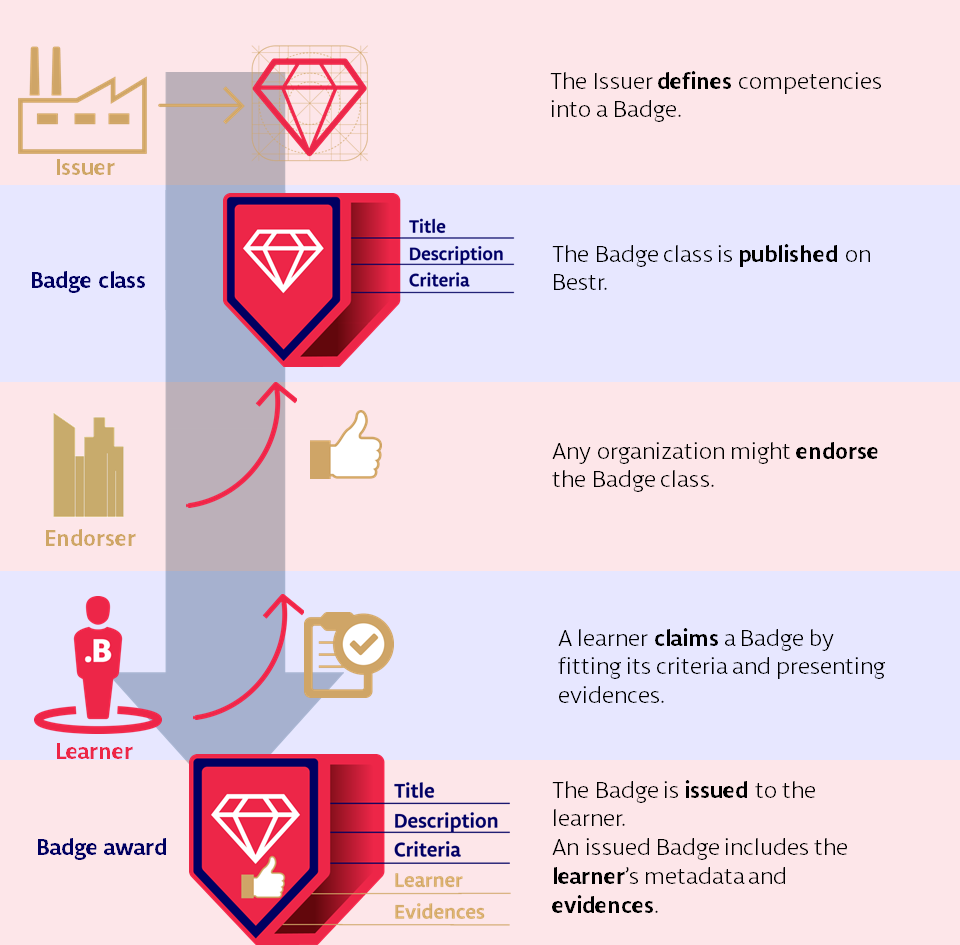Designing and issuing Open Badges: an infographic

Any organization grows skills: domain skills and soft skills.
An organization can define its known skills, describing them and how they can be assessed. This is the Badge content and it is published on Bestr in the Badge Class page, together with the visual representation of the skill: the digital image we know as Badge.
The organization defining the content of a Badge Class is the Badge issuer.
A Badge Class is public: learners can see it and choose to demonstrate a skill by obtaining that Badge, while other organizations can give their endorsement, thus expressing their trust in the issuer organization.
If a learner wants to get a Badge to demonstrate his or her skills, he or she must meet the Criteria described for the Badge: completing a training experience, providing evidence, passing a test (read more about learning and assessment paths connected to Badges).
When the issuer has verified that the learner meets the Criteria, it will issue the Badge to the learner. As the learner claims the Badge, the Bestr platform creates both the actual Open Badge and the public webpage describing it, the Badge Award page.
The learner now holds an Open Badge showing his or her skill, and containing his or her own data (name, email, date when the Badge was obtained) and possible evidences used to claim it, adding up to the skills description as defined by the issuer.
The Badge Class life doesn't end when the Badge is issued: the Badge Class can receive new endorsements, and they will be also shown on the Badge Award pages for every learner, together with the number of total owners of the Badge, increasing the Badge's perceived value.
Every learner holds one end of a trust chain that keeps expanding, involving the learner, the organization acknowledging his or her skill, those who helped him or her to develop it and those recognizing its value.
This is the first of a series of posts intended to explain how Bestr implements the Open Badges model to bring value to people's lifelong learning experiences and the job market.
Read more: